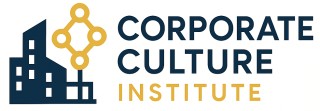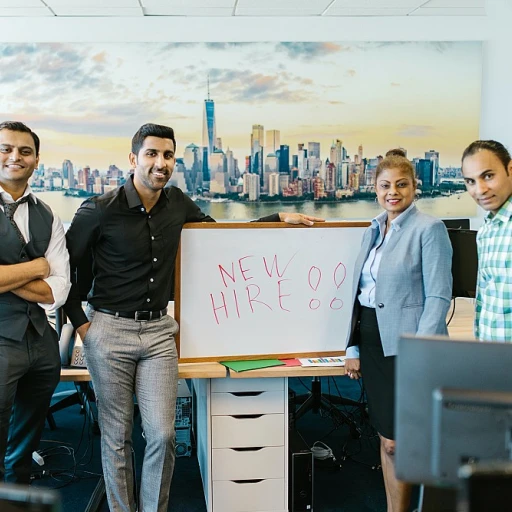Understanding the Foundation of Workplace Expectations
Grasping the Core of Workplace Standards
Understanding the foundation of workplace expectations begins with recognizing the myriad elements that shape how employees engage with their jobs daily. These expectations can encompass performance standards, team dynamics, and the overarching business goals set by managers and the company at large.
Employees will often refer to performance expectations as a key factor in their overall job satisfaction and engagement. But how exactly do these expectations form?
One primary element is the company’s culture, which can significantly influence what is expected of employees. Businesses often set clear expectations to ensure workers are aligned with the organizational vision and objectives. This clarity not only enhances employee performance but also fosters a sense of stability and direction within the team.
Communication plays a vital role in reinforcing these expectations. Managers are encouraged to engage in regular dialogue with staff to clarify and reinforce what is expected in terms of roles and responsibilities. Clear communication can prevent misunderstandings and boost employee engagement as individuals feel more informed and valued.
Moreover, the physical and emotional work environments contribute to employee expectations. These environments can dictate the rhythm and flow of expected work, from customer service roles to strategic planning positions, and understanding them is crucial for setting realistic and attainable goals.
It’s also crucial to consider how expectations might evolve in remote work settings, where traditional office dynamics are replaced by digital interactions. Engaging effectively in such environments necessitates adaptability and a clear understanding of performance standards.
Organizations that invest time in defining and communicating performance expectations can expect to see improvements in overall employee engagement and job satisfaction. For teams using Agile methodologies, mastering
product backlog refinement can be instrumental in balancing these expectations effectively.
As workplace expectations become more multifaceted, understanding and setting them properly becomes essential in navigating the complexities of modern work life.
The Role of Communication in Shaping Expectations
The Power of Effective Communication in Establishing Expectations
Communication plays a pivotal role in shaping and setting expectations in any workplace. By fostering an environment where communication is prioritized, a company can ensure that employees understand expectations clearly, thereby enhancing their performance and engagement.
It's essential for managers and leaders to initiate conversations that convey expectations in a direct yet supportive manner. This practice not only helps to ensure that each member of the team knows what is expected of them in terms of tasks and outcomes but also creates a platform for staff to voice their own expectations about their roles.
Engaging in open dialogues aids in setting clear boundaries and performance expectations, which align with the broader goals of the business. Without these discussions, employees might feel uncertain about their job responsibilities, which can lead to decreased job satisfaction and inefficiencies.
Moreover, communication methods should be adaptive to fit the diverse cultural backgrounds present within a team. Different communication styles may be required to cater to varying interpretations of messages. It's about creating an inclusive environment that respects and understands diverse perspectives.
To improve communication and expectations alignment:
- Conduct regular performance reviews to adjust expectations as needed and gather employee feedback.
- Set clear goals and milestones for projects, ensuring that every team member knows their part.
- Utilize multiple channels of communication, such as team meetings, one-on-one sessions, and digital platforms, to maintain consistency.
- Encourage employees to express their expectations and challenges, promoting a transparent and supportive work culture.
For a more comprehensive understanding of how communication impacts workplace dynamics, explore our article on
understanding the differences between sprint review vs. sprint retrospective. This resource offers insights into structured meetings that can help clarify and refine work expectations.
Through effective communication, companies can cultivate a robust culture where expectations are not only set but are also met and exceeded. Such a culture ultimately contributes to higher employee engagement and optimal performance.
Balancing Flexibility and Structure
Striking the Balance Between Adaptability and Structure in the Workplace
Navigating the intricacies of workplace expectations requires a careful balance between flexibility and a structured approach. While setting clear expectations is a foundation for engaging employees effectively, allowing room for adaptability is also crucial to sustain the dynamics of business environments.
To harmoniously blend these aspects, companies should consider the following:
- Define Performance Expectations: Establishing clear performance expectations helps staff understand what is expected in their roles. This can include job performance criteria, employee engagement metrics, or even customer service outcomes. Managers should regularly review these to align with evolving company goals.
- Encourage Open Communication: Creating an environment where employees will feel comfortable sharing their thoughts can promote job satisfaction and better employee engagement. Open dialogue allows workers to voice concerns, propose solutions, and contribute to setting clear expectations.
- Flexible Work Policies: As remote work environments become more prevalent, flexibility helps employers adapt to diverse employee expectations without sacrificing structure. This involves setting guidelines on expected work outcomes while allowing freedom in how they are achieved.
- Incorporate Feedback Mechanisms: Regular performance reviews can provide insights into employee expectations and areas requiring adjustments. Feedback loops enable staff to feel involved in shaping their work environment, ultimately leading to more engaged, motivated teams.
Balancing flexibility with a structured approach ensures that clear employee expectations are met while fostering an adaptable yet focused workplace. Understanding these dynamics is vital for managers and teams aiming to achieve set objectives effectively.
For more insights into understanding and
aligning employee assessments in corporate settings, further exploration can be valuable.
Cultural Diversity and Its Impact on Expectations
Diversity as a Catalyst for Shaping Employee Expectations
Diversity within a workplace is not just a buzzword, but a crucial element that impacts the fabric of employee expectations. With the globalization of business, companies now consist of a rich tapestry of cultural backgrounds that influence how expectations are set, understood, and met. Embracing cultural diversity can significantly enhance employee engagement and improve team performance, as it encourages a myriad of perspectives to be respected and integrated.
One key aspect of managing a culturally diverse workforce is recognizing that cultural differences often intertwine with workplace expectations. Different cultural norms and values inevitably shape how employees perceive roles, responsibilities, and communication. Thus, it's important for managers to be culturally competent to prevent misunderstandings that can arise from misaligned expectations.
Companies that acknowledge and address these cultural variances are best equipped to create clear expectations that resonate across all levels of the organization. This involves adapting communication styles to ensure messages are interpreted as intended—whether it’s about setting clear performance expectations or discussing customer service standards. Furthermore, flexible policies that accommodate cultural variances can boost job satisfaction by making employees feel understood and valued.
Managers should also consider how they can set expectations that are inclusive of these diverse perspectives. Encouraging cross-cultural teams fosters collaboration and innovation, paving the way for a richer exchange of ideas that benefits the entire business. In doing so, employees will likely feel more engaged and better aligned with company goals, resulting in smoother performance reviews and enhanced employee performance.
Ultimately, understanding the multifaceted nature of workplace expectations is essential for building a cohesive work environment. By valuing cultural diversity and adapting management approaches accordingly, organizations can effectively set expectations that are fair and achievable for all employees. This not only supports a harmonious and productive workplace but also strengthens the company’s ability to compete in a multicultural world.
Managing Expectations in Remote Work Environments
Adaptability in Remote Work Environments
Navigating the landscape of remote work environments is a challenge that continues to test modern businesses. Managers and staff must adapt to the nuances of reduced face-to-face interactions while still ensuring that expectations are clearly communicated and employees remain engaged. The shift from physical office spaces to remote or hybrid setups brings with it unique expectations of flexibility, performance, and communication.
In remote environments, setting clear expectations is more crucial than ever. Employees need to understand expectations regarding their job responsibilities, performance metrics and communication protocols. Regular performance reviews can help align these expectations with actual performance, leading to greater job satisfaction and employee engagement.
Challenges and Solutions- Communication Barriers: Remote work can lead to communication breakdowns. Managers should employ tools and practices that facilitate seamless interactions to ensure that expectations are understood and met.
- Performance Monitoring: The visibility of employee work may be reduced remotely, so setting clear performance expectations is critical to maintaining high standards. Regular check-ins can aid in providing the necessary feedback and support.
- Flexibility vs. Structure: Employees desire flexibility, but they also need a structured framework within which to operate. Balancing these aspects can lead to better performance and employee satisfaction.
- Diverse Teams: Remote teams are often culturally diverse, which can impact expectations. It's essential to recognize these cultural differences and incorporate them into the team’s work dynamic to enhance cooperation and understanding.
The foundation of these practices bears roots in effective communication, as emphasized throughout the workplace experience. By addressing these challenges, businesses can harness the full potential of remote work environments, ensuring that both organizational and personal goals are met.
Strategies for Aligning Personal and Organizational Goals
Aligning Individual Objectives with Company Goals
Finding the balance between personal and organizational goals is a fundamental step towards enhancing both employee satisfaction and performance. Understanding expectations is at the core of this endeavor, where both employees and managers must engage in continuous dialogue.
- Setting Clear Expectations: Establishing what is expected work and performance expectations right from the start helps to avoid confusion and fosters an environment where employees can thrive. A well-structured performance review system can assist in identifying how individual roles contribute to broader company objectives.
- Communication as a Key Driver: Developing a culture of open, transparent communication ensures that employees understand expectations and stay aligned with organizational priorities. Regular touchpoints, such as team meetings and one-on-one sessions, can help clarify employee expectations and tackle any alignment issues swiftly.
- Empowering Employees: Empowerment through active participation in goal setting encourages engagement and a sense of ownership over their work. When employees see their efforts linked directly to the company's success, their job satisfaction and performance are likely to improve.
- Flexible Goal Setting: While structure is crucial, flexibility in goals allows adaptation as circumstances change. Adjusting expectations to meet the evolving dynamics of business needs enables workers to stay on track while feeling supported.
Incorporating these strategies within a company's framework aids in aligning personal ambitions with corporate vision, ultimately creating a harmonious and productive workplace. By consistently refining these practices, businesses can ensure their staff continue to feel valued, leading to heightened employee engagement and meeting the expectations set for performance both at an individual and organizational level.














